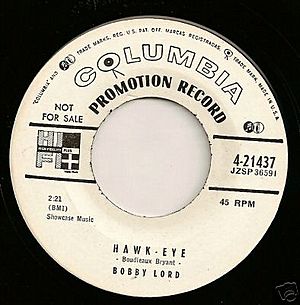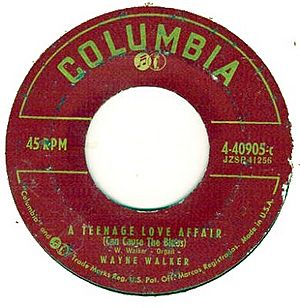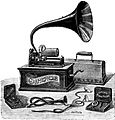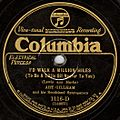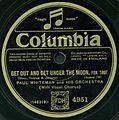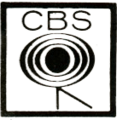Columbia Records facts for kids
Quick facts for kids Columbia Records |
|
|---|---|
| Parent company | Sony Music Entertainment (SME) |
| Founded | 1887 (part of the North American Phonograph Company until 1894) |
| Distributor(s) |
|
| Genre | Various |
| Country of origin | United States |
| Location | New York City, New York, United States |
Columbia Records is a very old and famous American record label. A record label is a company that helps musicians record, produce, and sell their music. Columbia Records is owned by Sony Music Entertainment. It started way back in 1887, making it one of the oldest names in the music business! It was only the second company ever to start making recorded music.
Over the years, Columbia Records has released music by many well-known singers, musicians, and bands. From 1961 to 1990, its music was sold outside the United States and Canada under the name CBS Records. But since 1990, it has used the Columbia Records name all over the world. It's one of Sony Music's three most important record labels, along with RCA Records and Epic Records.
For a long time, Columbia Records had nothing to do with Columbia Pictures, the movie company. Columbia Pictures had its own music labels like Colpix Records and Arista Records. But now, both Columbia Records and Columbia Pictures are connected because they are both owned by Sony Corporation of America.
Many famous artists have signed with Columbia Records. These include Adele, Beyoncé, Bruce Springsteen, Celine Dion, Daft Punk, One Direction, and Pharrell Williams. In 2012, Columbia Records had the most music played on adult contemporary radio in the US, becoming the top label for that type of music.
Contents
History of Columbia Records
How it Began
Columbia Records started in 1887. It was first called the Columbia Phonograph Company. Its name came from the District of Columbia, where its main office used to be.
At first, the company sold Thomas Edison's phonographs and phonograph cylinders. These were early ways to record and play sound. Columbia also started making its own cylinder recordings. By 1891, they had a long list of music to choose from.
New Records and Players
In 1894, Columbia separated from Thomas Edison's company. After that, Columbia began selling only its own records and phonographs. They started with brown wax records in 1902, then black wax records in 1903.
In 1901, Columbia began selling disc records and disc players. These were different from the cylinder system. For the next 10 years, Columbia competed with Edison's cylinder company and Victor's disc company. It was a big competition among the top music companies in America.
In 1903, Columbia invited famous singers from the Metropolitan Opera in New York to record music. This helped make their list of artists more respected. In 1908, Columbia started making "Double-Faced" discs, which had music on both sides. These 10-inch records sold for 65 cents each. They also made the "Grafonola" player to compete with Victor's popular "Victrola". During this time, Columbia used its "Magic Notes" logo, which showed two musical notes in a circle.
Columbia stopped making wax cylinder records in 1908. They switched to selling stronger celluloid cylinder records. By 1912, Columbia decided to focus only on disc records. They stopped making and selling cylinder players.
Changes and New Sounds
In 1925, Columbia began recording music using a new electric recording method. This made their "Viva-tonal" records sound much clearer and better. The first electric recordings were made by Art Gillham.
In 1926, Columbia bought Okeh Records. This brought many jazz and blues artists to Columbia, including Louis Armstrong and Clarence Williams. Columbia already had great blues artists like Bessie Smith. They also had a popular "Hillbilly" series for early country music.
In 1928, Paul Whiteman, a very popular orchestra leader, joined Columbia. That same year, a Columbia executive named Frank Buckley Walker helped record some of the first country music in Tennessee. These recordings included artists like Clarence Horton Greene and "Fiddlin'" Charlie Bowman.
In 1929, Ben Selvin became the main bandleader and talent director for Columbia. Other popular artists during this time included Ruth Etting and Ted Lewis. Columbia's older rival, Edison Records, closed down in 1929. This made Columbia the oldest record label still in business.
Tough Economic Times
In 1931, the British part of Columbia merged with another company to form EMI. Because of business rules, EMI had to sell its US Columbia operations.
During the Great Depression, a time of tough economic problems, record sales went down. In 1934, Columbia was sold for $70,000 to the American Record Corporation. This company already owned Brunswick Records, so Columbia became a label for less popular music. By late 1936, they almost stopped releasing pop music.
However, Columbia had a special contract with the Chuck Wagon Gang, a popular southern gospel group. This group became Columbia's bestsellers, selling at least 37 million records. This helped Columbia during those difficult years.
CBS Takes Over
In 1938, William S. Paley of the Columbia Broadcasting System bought Columbia Records for $750,000. CBS brought back the Columbia label and the Okeh label. They renamed the company Columbia Recording Corporation.
From this time until the late 1950s, the Columbia logo showed two overlapping circles with the Magic Notes and a CBS microphone. The records were often a deep red color. For classical music, the labels were blue, then green, then gray, and finally bronze. In Canada, Columbia records were released by Sparton Records.
In the 1940s, Columbia signed Frank Sinatra. Sinatra recorded over 200 songs with Columbia, which helped the company earn a lot of money. Other popular artists included Benny Goodman and Count Basie.
In 1948, Columbia introduced the Long Playing (LP) record. This new record could play much more music on one side. It spun at 33⅓ revolutions per minute. This new format quickly became the standard for music records for many years. The first pop LP was The Voice of Frank Sinatra. The first classical LP was a recording of the Mendelssohn Violin Concerto.
The LP Record Era (1948–1959)
Columbia's LPs were great for longer pieces of classical music. Early albums featured artists like Eugene Ormandy and the Philadelphia Orchestra. The success of these LPs made other big labels like Capitol Records and RCA Victor start releasing LPs too.
Columbia also became known for recording Broadway musicals with the original cast members, like South Pacific in 1949. They also released LPs from popular movie soundtracks.
The 1950s
In 1951, Columbia USA started making 45 rpm records, which RCA had introduced earlier. Also in 1951, Columbia USA stopped its agreement with EMI and signed a new deal with Philips Records to sell Columbia recordings outside North America.
Columbia became very successful in the 1950s, even though it wasn't focused on rock music at first. They signed popular artists like Frankie Laine, Tony Bennett, Rosemary Clooney, and Johnny Mathis. In 1953, Columbia started a new label called Epic Records.
In 1955, Columbia tried to sign Elvis Presley from Sun Records, offering $15,000. However, Elvis's manager turned down the offer, and Elvis signed with RCA Victor instead. But Columbia did sign two other Sun artists in 1958: Johnny Cash and Carl Perkins.
In 1954, Columbia USA introduced its new "Walking Eye" logo. This logo looks like a needle (the legs) on a record (the eye). The "eye" also hints at CBS's main business, television, and its famous Eye logo. The "notes and mike" logo was slowly phased out by 1958.
In 1956, Columbia jazz producer George Avakian signed Miles Davis to the label. In 1958, Miles Davis released Milestones, an important album that explored new jazz styles. In 1959, his album Kind of Blue became extremely popular and influential. Rolling Stone magazine later listed it as one of the "500 Greatest Albums Of All Time."
Related pages
Images for kids
-
A Columbia type AT cylinder graphophone was produced in 1898.
-
The British label of an electrically recorded Columbia disc by Paul Whiteman
See also
 In Spanish: Columbia Records para niños
In Spanish: Columbia Records para niños




